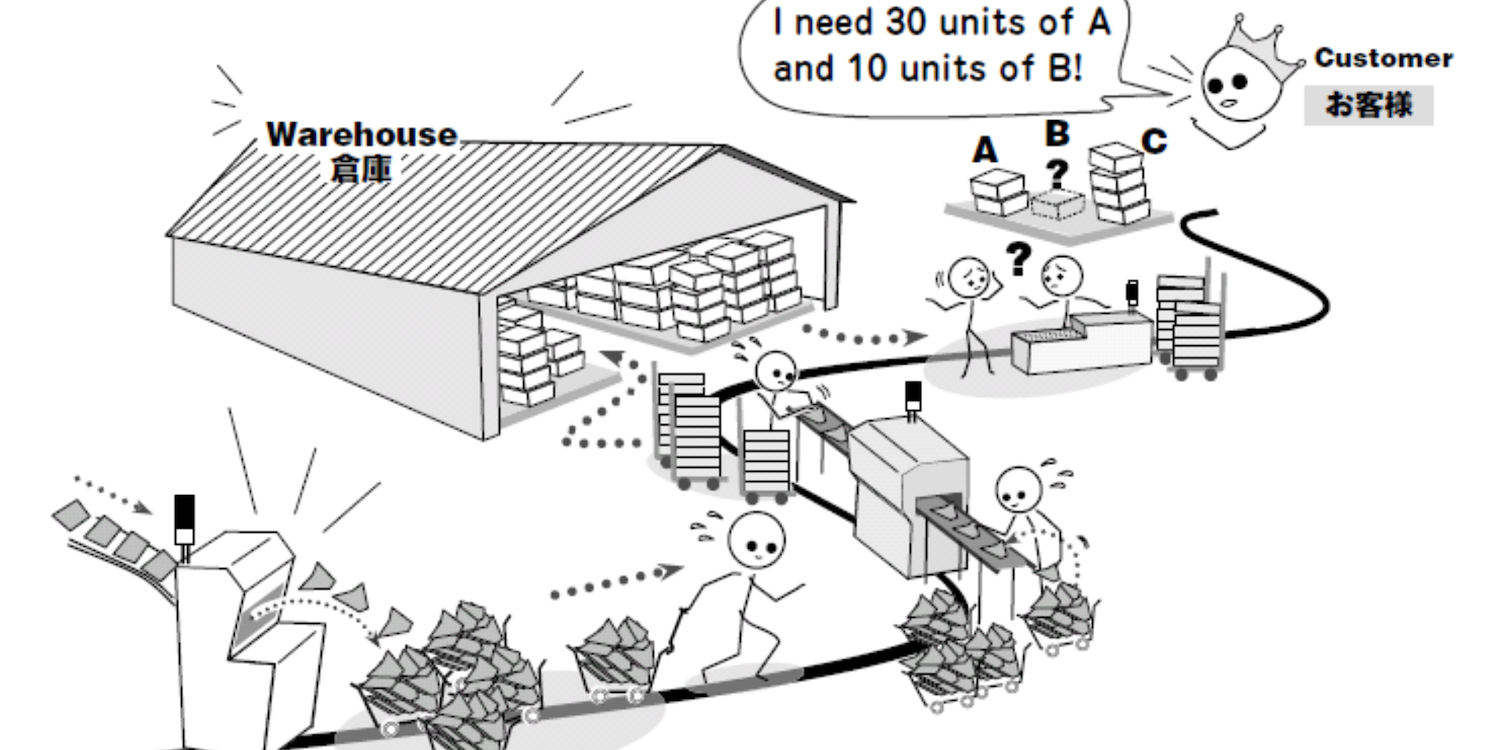
Our experience teaching lean at SulAmérica
FEATURE – What does it take to support a lean transformation from within? The author reflects on the role of the lean team in the turnaround of Brazilian insurance company SulAmérica.
Words: Luciana Gomes, Process Supervisor, SulAmérica – Brazil
Banner picture credit: Reinaldo Canato
The resolution of beginning to work with lean thinking and practice at SulAmérica was a top down decision. It was part of the company’s strategy to create more value for customers with our products and services and also to establish a single process for all business units. SulAmérica’s challenge was to create more synergies within its departments.
To begin our journey, we counted on the support of the Lean Institute Brasil, whose coaching helped us to spread the lean theory in the company and offer practical training for our employees.
Our lean efforts began in the automotive segment, partly because we perceived a lot of opportunities to reduce our administrative expenses, which represented 14% of all spent. The first step in the project was to map the value stream of the auto processes and focus on three activities in particular – policy issuance, claims and paying out repair shops. The payment project was smaller in scope, but we figured it would allow us to get quick results to more easily evaluate the role that lean could play in the company, which was confirmed by the fact that we exceeded the A3 goals only three months after we started it.
The second and more challenging project entailed redesigning the claim adjustment process in our automotive centers located in 35 different branches across the country, which became the focus of SulAmérica’s most successful A3. It took six months for people to agree with the changes, but we eventually identified two branches where we could run a pilot project. Three months later, the results of our experiment appeared, and everybody quickly asked to move to the new model. That was our best business case for Lean Thinking.
At the time, our focus was on engaging multi-functional teams in doing VSM and writing A3s for each process we tried to improve. As a lean team, our approach was very hands-on: we were involved in every single project that was launched, from the planning to the reporting stages. In order to prove the value of using the lean methodology, all results were reported monthly to the COO and quarterly to the board of the company.
As part of reviewing our own process (using a value stream map ourselves), we created a standardized work to encourage leaders and sponsors to take more ownership of the improvements and the results they achieved. The leader became responsible for getting the A3 results and reporting them monthly to the sponsor and to the lean team. We also created a clear schedule of meetings and better defined everyone’s roles and responsibilities. Everything was presented, discussed, and agreed with the leader and sponsor before starting any A3 project. These simple measures had a tremendous impact. The lean team stopped doing simple project management and began to generate real learning opportunities for SulAmérica’s staff. At the same time, we changed the system of reviewing A3s: previously, these were only showed to sponsors at the end of the improvement cycle, without giving them a chance to assimilate the information and discuss it with the A3 owner. We created a new standard asking the leader to show the left side of the A3 to the sponsor before starting work on the right side, which led to better expectation setting and improved communication between key people (front line and management), without the need for us to play the role of liaison. In turn, this freed up a lot of our time, allowing us to focus on more improvements.
Three years into this journey, we have created a model line in our automotive department. To teach people working in the model line, many theoretical concepts were implemented over the course of eight months. We worked a lot, but not everybody bought into lean ideas right away (everything was pre-scheduled at the time, with large batches of theory instead of the right knowledge provided to the right people at the right time). But it was still important for us in the lean office to go through that process, because it helped us see the potential of lean for our organization and to figure out which changes we had to bring to which areas, based on the needs people were expressing. Eventually, the tools we introduced became more useful and people started to embrace them, which greatly accelerated our progress.
This year, we have started a second model line in our healthcare department, but we are using a more immersive, less scripted approach that is fed by the teams’ real needs. We have incorporated the five guiding principles identified in a recent White Paper written by the Lean Global Network’s Lean Healthcare Initiative as key to speeding up a lean transformation. We hope this new approach to the model line will help us to accelerate and sustain change in the health departments. So far, those areas have put only some of the lean concepts in place (mainly A3s or Daily Management).
Over the years, our discussions within the lean and management teams have increasingly focused on the idea of creating a lean management system at SulAmérica. We were not exactly sure what that meant until we heard a presentation by Dr Carlos Frederico Pinto of the Instituto de Oncologia do Vale at our first Lean Day. It was an eye-opener and it convinced our COO to turn on the green light. Critically, at that moment he decided to involve the Human Resources department (he understood this had to do with the company’s culture, rather than an area’s process) to facilitate the spread of this and other lean practices across SulAmérica. It worked, and lean is now being disseminated in different areas of the company. In particular, this has meant teaching the Lean Transformation Framework to the leadership team and bringing A3 to everybody else.
The main problem we are experiencing now is that some areas are using just one or two lean tools in a disconnected way. For instance, A3 Thinking and daily management are being used in many areas but, depending on where you go, teams tend to use either one or the other. When they use both, these tools are not necessarily connected. It was our fault, really: when we started the repair shop payments project, daily management was used to improve capacity rather than as a problem-solving system. The yokoten we did after that ended up “selling” that same approach across the business. So, we are now trying to pivot and better connect daily management with problem solving. Elsewhere our success with A3 (attributed in part to the fact that we were able to gamify our A3 course) has become something of a problem, because everyone wants to do it, but sometimes fails to understand there is more to Lean Thinking that just A3s.
Hoshin kanri, which a lot of people at SulAmérica are currently involved in, has had an incredibly positive effect on our work. Since we introduced it, we have seen people from different areas discussing the same problems and beginning to collaborate to solve them. Even though, frustratingly, a lot of them still do not associate hoshin with our lean journey, it has undoubtedly provided a huge contribution to it. Hoshin represents the link between the many projects that we have been launching up and down the business and our vision and common goals. It allows us to bring the different pieces of our journey together and have everyone move in the same direction.
THE BIGGEST LESSONS WE LEARNED
First, one of the most important things we have learned along our journey is that making lean engaging, even fun, is critical to its success. We have experienced this with A3 Thinking, for example: it takes time to master the art of A3, but we have found that introducing our contest and transforming problem solving into a game enthused people and ultimately improved the quality of the A3s they prepare.
Secondly, we have learned the importance of knowledge sharing (yokoten), especially at the gemba. Showing SulAmérica’s people real-life examples at the gemba during training really helped them to connect what they saw with the problems they were experiencing in their own workplaces.
Third, we learned early on that a lean transformation is for the people to own and turn into reality. The goal of our lean team is to turn people into independent improvers and problem solvers. In the auto segment we have achieved that, but we still have a lot of work to do in other departments.
Indeed, when we began disseminating Lean Thinking across the company, its sustainability became a concern. To tackle this, with the help of the Lean Institute Brasil, we have recently introduced a new assessment tool based on the Lean Transformation Framework for those areas that are engaged in deeper experimentation. We have found it to be extremely useful to understand the next step we need to take in each of those areas. More importantly, we have involved area managers in those conversations, hoping to wean them and leave them in charge. Going forward, this tool can be the final step before we pass down the torch to our managers, to ensure they share the same vision and can pick up where we have left off.
THE AUTHOR

Read more


FEATURE – The release of Christoph Roser’s new book All About Pull inspires John Shook to discuss the origins and true meaning of “pull” and why it is incorrect to blame JIT for the shortcomings of global supply chains.


FEATURE – We all want to create a lean culture in our organizations, but what makes cultural change possible? And, more importantly, what are the leadership behaviors that enable a new culture to take root?


INTERVIEW – Making lean thinking a bigger part of our university programs and education is the only way to ensure the methodology really comes to permeate our societies. But how can we ensure lean is taught in a way that makes sense?


FEATURE – Nordic Door and its Lithuanian partner NDC are applying Lean Thinking and PDCA to develop people, improve quality, and strengthen trust across borders through shared learning.

